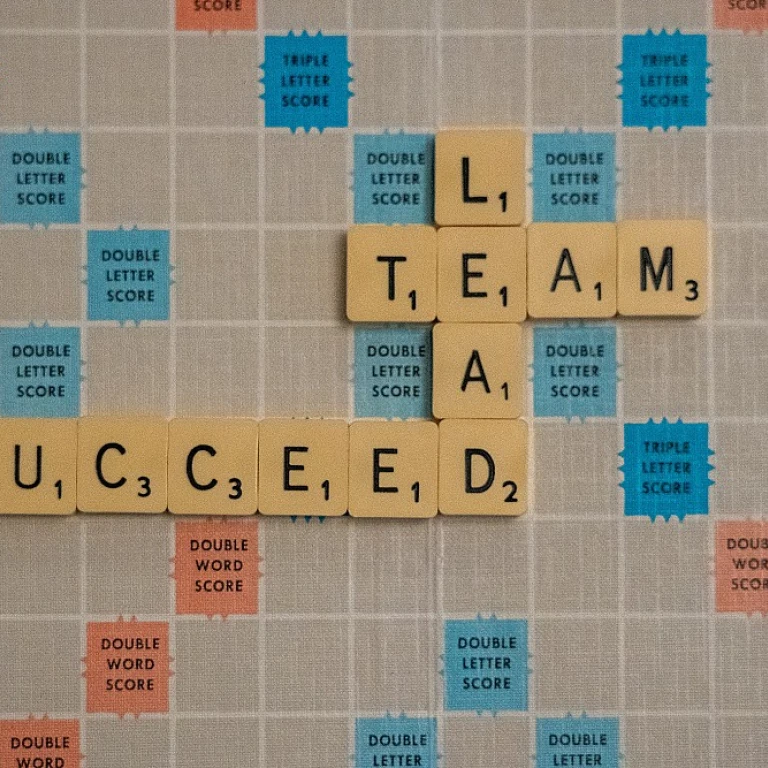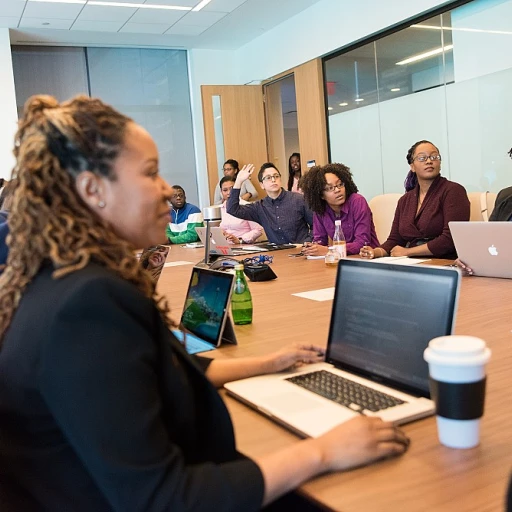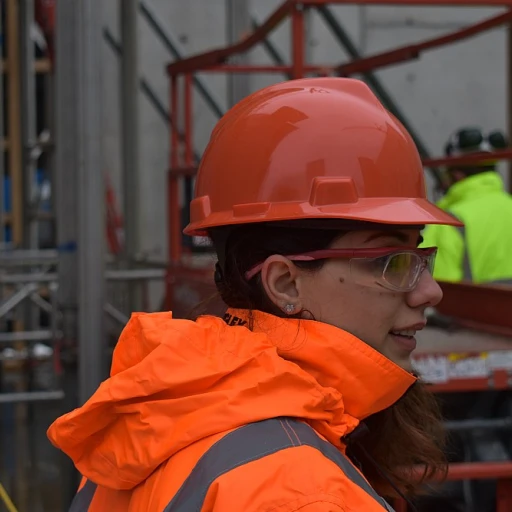
Understanding the Importance of Peer Recognition
The Role of Recognition in Building a Thriving Workplace Culture
In today’s competitive work environment, fostering a positive workplace culture is no longer a nice-to-have but a vital component of a thriving company. Peer recognition plays a crucial role in achieving this. It’s about more than just acknowledging hard work; it’s a way to recognize contributions, reinforce company values, and enhance employee engagement. When employees feel valued for their efforts by their peers, it creates a ripple effect that influences the entire company culture.
Research indicates that recognition programs can improve employee performance and make team members feel appreciated. These programs contribute to creating a culture of appreciation where employees feel empowered and motivated to maintain a positive attitude. By recognizing team members for their contributions and dedication, companies can build a supportive environment where employees feel connected and engaged.
Implementing an effective recognition program can lead to increased employee engagement and a more cohesive team dynamic. Employees who are regularly recognized for their achievements are more likely to stay with the company and continue to contribute positively. It’s not just about making employees feel appreciated; it’s about fostering a sense of belonging and boosting morale.
While the importance of peer recognition is clear, the challenge lies in how to effectively implement it. The use of tech tools and inspiring quotes to boost colleague engagement can provide a structured approach to appreciation, ensuring that employee recognition doesn’t get lost in the day-to-day hustle. By embracing recognition initiatives, companies can effectively highlight the efforts of their team members and cultivate an environment that promotes employee appreciation and engagement.
Tech Tools for Facilitating Peer Recognition
Leveraging Technology to Boost Peer Interaction
Technology plays a crucial role in facilitating peer recognition within workplaces, making it easier for employees to recognize the efforts and contributions of their team members. By integrating innovative solutions, companies can enhance their culture of appreciation and keep employees engaged.
Key Tech Tools for Peer Recognition
- Employee Recognition Platforms: These are dedicated tools that allow employees to give and receive recognition seamlessly. They can highlight outstanding contributions, recognize hard work, and foster a positive work environment.
- Social Intranets: Often integrated with recognition features, these platforms promote a sense of community. They allow team members to engage in positive peer interactions, pushing the company's culture values forward.
- Mobile Apps: With mobile solutions, employees can recognize peers on-the-go, ensuring appreciation is timely and relevant regardless of work location.
- Gamification Technologies: Implementing elements like leaderboards can motivate employees to participate in recognition programs, driving a sense of accomplishment and competition.
Case Study: Enhancing Employee Recognition
According to Inspirational Quotes for an Engaged Workforce, companies that actively use tech tools for peer recognition report higher levels of employee engagement and satisfaction. These tools make employees feel valued and foster a company culture where appreciation is a part of everyday work life.
Integrating appropriate technology enhances the efficiency of recognition programs, ensuring they are sustainable and effective in the long run. It is essential for companies to evaluate and choose tools that align with their unique culture and values to maintain a high-performing, motivated workforce.
Creative Peer Recognition Examples
Innovative Recognition Strategies
Integrating creative methods into peer recognition efforts can significantly impact how employees feel about their work environment and contributions. Recognizing team members for their hard work is essential for reinforcing positive attitudes and fostering a culture of appreciation. Here are some inspiring ways companies are putting this into practice:- Peer Appreciation Walls: Many companies are creating designated spaces where employees can publicly post notes or cards expressing gratitude and acknowledgment of colleagues' efforts and contributions. This not only brings an element of visibility to peer recognition but also reinforces a culture of appreciation.
- Recognition Boards or Digital Platforms: In our digital age, companies are leveraging platforms like Slack or dedicated recognition apps to facilitate instant, public recognition. This method ensures that employee efforts are acknowledged in real-time and contribute to building a supportive work environment.
- Monthly or Project-Based Awards: Recognizing employees and teams who go above and beyond during specific projects or on a monthly basis can motivate the entire team. Presenting awards or tokens of appreciation at company gatherings further enforces the significance of their contributions.
- Personalized Recognition Certificates: By tailoring recognition to individual achievements, such as issuing creatively designed certificates for milestones or specific performance, companies can make employees feel truly valued for their unique contributions.
- Peer-Nominated Awards: Turning the power of nomination over to employees encourages them to actively participate in the recognition process and highlights the efforts of those who might otherwise be overlooked.
Challenges in Implementing Peer Recognition Programs
Addressing Common Obstacles in Peer Recognition
Implementing peer recognition programs in a workplace may pose several challenges that companies must navigate to ensure these initiatives drive positive employee engagement and bolster the workplace culture of appreciation. One significant challenge is cultivating a culture where employees feel comfortable recognizing others. This can be particularly daunting for new team members or in work environments where competition is prioritized over collaborative team efforts. Peer recognition programs must therefore be carefully crafted to align with company values and support a culture in which employees feel empowered to appreciate the contributions of their colleagues. Consistency in employee recognition is just as vital. Recognition peer programs may lose impact if they are not maintained regularly or if only a select few employees feel valued for their hard work. It's crucial for recognition programs to broadly acknowledge the dedication of team members across multiple projects and responsibilities. Both employee appreciation and employee recognition should be celebrated at all levels to foster a positive performance attitude across the company. Resource allocation is another hurdle. Not all recognition initiatives require significant financial investment, but crafting comprehensive programs that consistently reward employees' contributions may demand both time and human resources. For sustainable success, setting clearly defined objectives and understanding various employee needs and preferences can aid the successful implementation of appreciation programs. Moreover, biased recognitions could occur, particularly if peer recognition lacks criteria or structure. Organizations must establish fair guidelines and share peer recognition examples to guide employees in the ways they recognize and celebrate others. Finally, placing sufficient emphasis on ongoing feedback in the recognition program can help ensure continuous progress. Feedback helps refine recognition strategies, allowing the company to adapt to changes and align the program with employee engagement goals. Addressing these challenges head-on not only enhances recognition programs but also contributes significantly to improved workplace culture and employee performance, ensuring employees feel appreciated for their valuable contributions.Measuring the Success of Peer Recognition Initiatives
Evaluating the Impact of Peer Recognition Initiatives
Measuring the success of peer recognition programs is crucial to ensure they effectively enhance employee engagement and foster a positive work environment. It can be challenging, but it is necessary to understand if these initiatives align with the company's values and culture. Here’s a closer look at some key performance indicators (KPIs) and methods to evaluate the effectiveness of peer recognition initiatives:- Employee Feedback: Regularly collect insights from employees on how recognized they feel within their team. Surveys and focus groups can be instrumental in gauging employee satisfaction and appreciation levels. Positive feedback can indicate that employees feel valued, which contributes to a thriving workplace culture.
- Engagement Levels: Monitor employee engagement levels through metrics such as participation rates in recognition programs or peer-nominated awards. A noticeable increase in participation usually reflects a more engaged workforce and a supportive recognition culture.
- Performance Metrics: Correlate recognition activities with individual and team performance metrics. Recognizing hard work often leads to improvements in performance, as employees are likely to be more motivated when their efforts are acknowledged.
- Employee Retention Rates: Analyze employee turnover rates before and after implementing recognition programs. A positive work environment where employees feel appreciated may lead to higher retention rates.
- Cultural Impact: Assess how peer recognition programs have influenced the company's overall culture. A culture of appreciation and consistent recognition can transform the workplace, promoting collaboration and driving a positive attitude among team members.
- Frequency and Types of Recognition: Keep track of how often and the ways employees recognize one another. Regular recognition may indicate a strong cultural integration, whereas infrequent recognition could suggest areas for improvement.
Future Trends in Peer Recognition and HR Tech
Emerging Trends Shaping Peer Recognition
As we look to the future, peer recognition is poised to evolve significantly, driven by advancements in technology and shifts in workplace culture. These changes are set to enhance how employees feel appreciated and valued, ultimately boosting employee engagement and fostering a positive work environment.
Integration of AI and Machine Learning
Artificial intelligence and machine learning are becoming integral in analyzing employee performance and contributions. These technologies can help tailor recognition programs to align with individual and team achievements, ensuring that recognition is both timely and relevant. By automating the tracking of employee efforts, companies can ensure that no hard work goes unnoticed, enhancing the culture of appreciation.
Gamification of Recognition Programs
Gamification is another trend gaining traction in the realm of peer recognition. By incorporating game-like elements into recognition programs, companies can create a more engaging and interactive experience for employees. This approach not only makes recognition more fun but also encourages a positive attitude and healthy competition among team members, reinforcing company values and boosting morale.
Focus on Real-Time Feedback
Real-time feedback is becoming increasingly important in recognition programs. Employees want to feel appreciated for their contributions as they happen, rather than waiting for annual reviews. Implementing systems that allow for immediate recognition can help employees feel valued and motivated, contributing to a more dynamic and responsive workplace culture.
Emphasis on Personalized Recognition
Personalization is key in making employees feel truly appreciated. Future recognition programs are likely to focus on tailoring appreciation efforts to individual preferences and achievements. This could involve recognizing employees in ways that resonate with them personally, whether through public acknowledgment, personalized rewards, or opportunities for professional development.
Conclusion
The future of peer recognition is bright, with technology playing a pivotal role in shaping how companies recognize and appreciate their employees. By staying ahead of these trends, organizations can create a culture of appreciation that not only recognizes hard work but also fosters a sense of belonging and engagement among employees.













